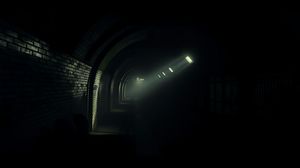
The Duke of Wellington Statue, located at Hyde Park Corner in London, commemorates Arthur Wellesley, the 1st Duke of Wellington, renowned for his victory over Napoleon at the Battle of Waterloo. The statue is a tribute to one of Britain's most celebrated military figures and plays a significant role in London's rich tapestry of historical monuments.
This grand statue was created by Sir Francis Chantrey, an acclaimed sculptor of the 19th century. It depicts the Iron Duke himself, proudly seated on horseback, a common portrayal of military men of his stature. The work initially caused quite a stir due to its size, as it was initially placed atop the Wellington Arch, leading to much public debate.
Upon its completion in 1846, the statue was the largest equestrian monument of its time. It's interesting to note that its relocation to the current site, due to public distaste for its imposing presence on the arch, reflects the changing tastes and urban planning sensibilities of the period.
During World War II, the statue had an added layer of protection in the form of a brick shelter to shield it from potential bomb damage. This effort to preserve the monument highlights its cultural importance and the value placed on maintaining history amidst war.
A fascinating feature of the statue is the intricate detail of the horse's anatomy, reflecting Chantrey's dedication to achieving lifelike depictions. Observers often marvel at the lifelike rendering, which was based on rigorous studies and anatomical accuracy.
In more recent times, the site around the statue has become a tranquil knot of pathways, gardens, and significant memorials, making it not only a point of historical interest but also a peaceful retreat in the bustling heart of London. It stands near other key monuments, adding to the area's historical allure.

Making the Most of Your Visit:
If you want a great photo, arrive early in the morning when the light is soft. The statue is positioned beautifully for capturing a shot with lovely morning sunlight casting interesting shadows and texture across the sculpted details.
For history buffs, take a moment to think about the historical context. Picture the time when this statue was moved to its current location, imagining the impact of such a public debate in Victorian London. The removal might be an early example of how public opinion can shape urban spaces.
Keep an eye out for the detailed anatomy of the horse. Sir Francis Chantrey was meticulous in his work, and this statue is a testament to his ability to bring lifelike qualities to bronze. It's a great demonstration of 19th-century craftsmanship.
Try visiting the statue on a quiet weekday afternoon. It's usually less crowded then, and you can enjoy a serene moment, reflecting on the Iron Duke's legacy, surrounded by lush greenery and the gentle hum of the city in the background.
After admiring the statue, take a short walk across Hyde Park Corner to the Wellington Arch. It's not only a fantastic way to extend your Wellington-themed exploration but offers insights into how monumental art was showcased in London and why some pieces were moved.

Visiting Times & Costs:
The Duke of Wellington Statue at Hyde Park Corner is open to the public year-round as it is situated outdoors. There is no entrance fee to view the statue, making it freely accessible to all visitors.
Accessibility is good, as the statue is located near pedestrian pathways with relatively easy access for those using wheelchairs or strollers. However, visitors should be mindful of uneven ground surfaces that are typical in outdoor settings.

Address & Map:

Nearby:























